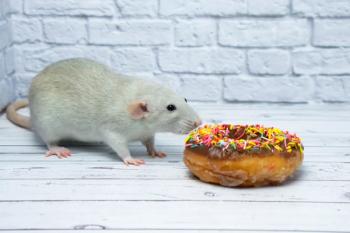
E-Separation Solutions
- E-Separation Solutions-08-17-2011
- Volume 0
- Issue 0
Capillary Electrophoresis
Participants in this Tech Forum are LCGC Editorial Advisory Board members Mary Ellen McNally of DuPont Crop Protection and Kevin Altria of GlaxoSmithKline.
Capillary electrophoresis (CE) competes with several separations techniques in the laboratory, including high performance liquid chromatography (HPLC), ultrahigh-pressure liquid chromatography (UHPLC), and ion chromatography (IC). Participants in this Tech Forum are LCGC Editorial Advisory Board members Mary Ellen McNally of DuPont Crop Protection and Kevin Altria of GlaxoSmithKline.
For large molecules that carry a charge, CE is often the best technology to employ. Can you comment on the ruggedness of CE and how it might affect its widespread application?
McNally: We have worked very diligently over the years to find the applications where CE is a better answer than HPLC and then later UHPLC. We have found a few minor examples but nothing that could support long term use and application in a routine laboratory. Applications in a research environment still show up periodically, so analytical chemists would be wise to have the technology in their tool-box of techniques to solve problems.
Altria: Kit-based separations and bespoke instruments have standardized separations and greatly assisted in eliminating sources of variance which has improved method performance and robustness. Recently 12 laboratories from 10 independent pharma companies highlighted the robustness of CE methods when they used a capillary isoelectric focusing (cIEF) method to both accurately and precisely (RSD values below 1%) determine the apparent pI (isoelectric point) and charge variant distribution of a monoclonal antibody (1). A previous successful interlaboratory exercise covering a range of pharma companies and regulatory bodies used CE to confirm the molecular weight of proteins and to evaluate charge heterogeneity and purity (2). Relative migration times of less than 2% RSD were obtained across the labs. Quantitation of the rMAB sample components was also highly comparable across the organizations.
CE analysis of large molecules is now a standard and well-established front-line approach within pharma companies involved in developing and marketing biopharmaceutics. CE methods are included in regulatory submissions and are in routine use in QA laboratories to release batches of product.
What are the best applications to date for CE that are widely employed and constitute the base support or funding for the technology?
Altria: The analysis of biopharmaceuticals is a clear application area. CE is also widely employed in drug discovery activities where standard methods can be used to experimentally determine solubilities (log P) and pKa values — often using multiplex CE instruments to gain high throughput. Standard ion analysis methods for inorganic anions (3) or metal ions (4) using kits are also popular. The most popular application is chiral analysis where method development can be very rapid generating robust methods allowing quantitation of 0.1% of the undesired enantiomer.
CE has been around for quite a while and has not appeared to "take-off" as a general purpose instrumentation tool. Why is that?
McNally: The "take off" for a technology really happens when the industrial users move instrumentation to the routine. And as I mentioned above that has not happened for us at DuPont very often. There are a couple of hurdles: first, capital investment of the new instrumentation, in this case CE, at the routine laboratory, second, training of personnel in CE, and third, maintaining the capability at the routine laboratory.
So we make every effort to only put new technology in to the routine environment, when what we already have there will absolutely not work. CE competes with HPLC, UHPLC, and IC, all very well established and versatile techniques.
Altria: CE encountered a formidable competitor in the form of HPLC! Labs were well equipped with HPLC equipment and trained staff who could operate equipment and run methods. CE equipment did suffer from lack of sensitivity and methods were not always developed with robustness in mind – these have both improved with technology and knowledge advances. CE has displaced HPLC and some other techniques in specific applications but I don’t think will take over the workhorse activities of assay and impurity determinations that continue to be performed by HPLC.
Do you have examples where CE can accomplish a separation that HPLC cannot?
McNally: We have used CE to replace IC for ion analysis only if the facility we are using does not have an IC system.
Not a very good example for your cause. And we prefer that the routine lab puts IC in place so extensive method transfer does not have to take place between two facilities that are using two different techniques
Altria: The main one would be chiral analysis. There were often examples where a chemist would come along with a sample of a racemic compound and say they had spent several weeks trying to develop a chiral separation. They were often amazed to receive an email a couple of hours later with a CE separation, generally with standard cyclodextrin-based electrolytes.
References
(1) O. Salas-Solano et al., Chromatographia 73, 1137–1144 (2011).
(2) B. Nunnally et al., Chromatographia 64, 359–368 (2006).
(3) K.D. Altria, LCGC Europe 24(1), 32–36 (2011).
(4) K.D. Altria, LCGC Europe 23(11), 543–545 (2010).
Articles in this issue
over 14 years ago
A Case for CEover 14 years ago
Laboratory Service & Supportover 14 years ago
International Light Scattering ColloquiumNewsletter
Join the global community of analytical scientists who trust LCGC for insights on the latest techniques, trends, and expert solutions in chromatography.




